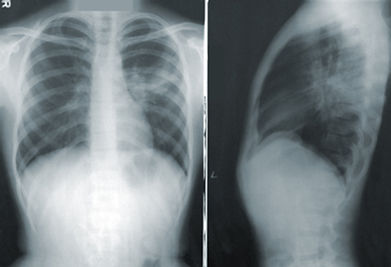
X-RAY
What's wrong?
Can chiropractic help?
How long will it take?
How much will it cost?
Following Your First Visit
After we study your health history and correlate our examination findings, we'll make recommendations designed to help you achieve and maintain your health. This is usually within one week of your first adjustment; we do this because it reduces the length of your first visit, it gives us time to gather findings and review the best course of action, and it helps prevent overloading you with too much information.
X-Ray Review
We'll spend about one hour reviewing our findings with you and offering answers to the four questions most patients have when they consult our office:
If you have any other questions, be sure to ask!
X-rays Are Safe and Provide Valuable Information
X-rays are a relatively safe and cost effective way to view the structure and general condition of the spine. They can reveal spinal regions under high stress and expose areas of degenerative change. This can often provide essential additional information which correlates history and examination findings allowing for a more accurate spinal analysis and a more individualized and effective treatment plan. X-rays are also useful in assessing the appropriateness of chiropractic care as they can help to rule out the existence of more serious pathological processes such as spinal fractures, tumors and infections which require immediate emergency medical intervention.
Procedures Used To Minimize Exposure
While prolonged exposure to radiation can be potentially harmful to the human body, the diagnostic x-rays utilized by the chiropractic doctor pose a minimal health risk. In fact, according to radiation guidelines for diagnostic x-ray studies, it would take more than 300 full spine x-rays performed by a chiropractor for these guidelines to be met. In addition, the following steps are used to further reduce the amount of x-ray exposure:
-
Only necessary x-ray views will be taken eliminating unnecessary x-ray exposure
-
Shielding & filtration to block or reduce the x-ray beam from affecting sensitive tissues and areas of nondiagnostic interest
-
Rare earth (intensifying) screens can cut x-ray exposure by 50 percent
-
Collimation to narrow the x-ray beam to include areas of interest only
-
Grids to reduce scatter radiation and improve x-ray quality
-
High speed film lowers exposure time by up to 1/12th compared to "hospital" x-rays
-
Increasing kilovoltage and minimizing milliamperage further reduces x-ray dosage
-
Minimal exposure times of just 100ths of a second
-
Regular changing of processor chemicals to give high quality, diagnostic films
-
1988 Conference of Radiation Control Program Directors - Plaugher G. Textbook of Clinical Chiropractic: A Specific Biomechanical Approach. Baltimore: Williams & Wilkins, 1993.
